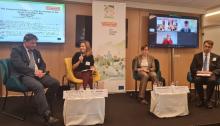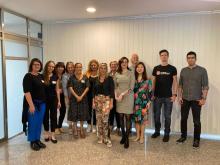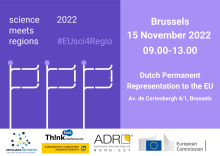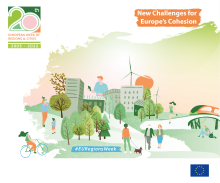Presentation of the Region
Lower Austria is one of the nine regions of Austria, located in the northeast of the country surrounding the Austrian capital Vienna. Since 1986, the capital of Lower Austria has been Sankt Pölten. With an area of 19,186 km2 and a population of 1.685 million people, Lower Austria is the largest and the second most populous region.
Over the past decades Lower Austria has developed from an agricultural region to an internationally recognised economic hotspot. The region has a diversified business structure with a high proportion of SMEs. Lower Austria is surrounded by high-growth markets in Central and Eastern Europe and is supported by strong networking with the economic region of Vienna which gives the region significant geographic advantages and thus an investment friendly environment.
In 2018, regional GDP in Lower Austria was € 61b, accounting for about 15.8% of Austrian GDP (Eurostat, 2020). GDP per capita in purchasing power standards (PPS) reached € 32,300 amounting to 83% of the national average (Eurostat, 2020). With exports of €22.5b (2019), Lower Austria ranks third nationally, accounting for 14.65% of national total exports. In 2019, Lower Austria’s unemployment rate of 4% (Eurostat, 2020) was low compared to the national standards (4.5%).
In Lower Austria, there are 14 tertiary education institutions and 9 other public R&D institutes. Additionally, there are 4 technology parks and several competence centres.
RIS3 Priorities
The Lower Austrian Economic Strategy 2025 foresees a bundle of instruments in four core strategies:
• Intelligent, innovative, high-quality products, materials & production
• Developments related to climate, the environment, and resources
• Digitalization, Big Data, and new business models
• High-quality, internationally prominent locations and regional centres
Instruments fostering smart specialization :
The Cluster Programme focuses on economic and technological fields of strength in the region, and aims at continuously identifying and advancing new priority topics with innovation potential and regional value creation. ecoplus as cluster management umbrella organisation currently manages 4 cluster initiatives: Green Building, Food, Plastics (e.g. focus on bio plastics) and Mechatronics (e.g. focus on Additive Manufacturing).
The Technopols are 4 R&D locations in the region combining higher education, research and businesses in specific technology niches with potential for international excellence and regional value creation. Example: Tulln, the Technopol for natural resources & biobased technology focusses on biobased process technology, agriculture and biotechnology, food and feed safety.
The innovation platforms for green transition & bio-economy and for health technology, both launched in 2021, help trigger collaborative projects in these strategically important topics for the region.
Digital transformation plays a major role (House of Digitalisation, DIH-OST).











